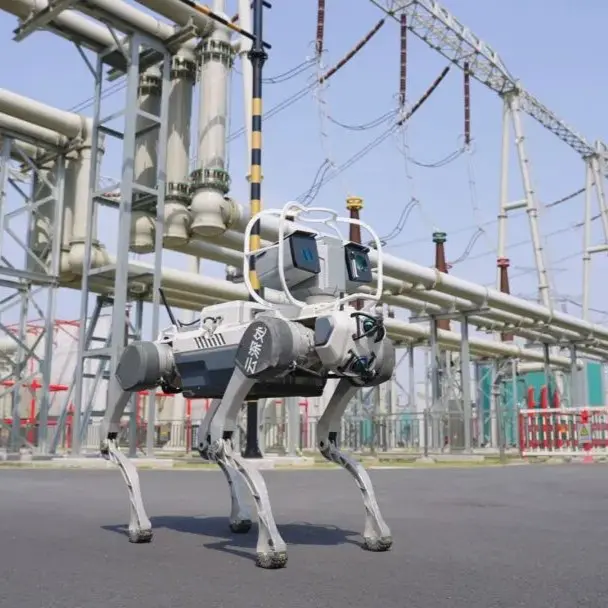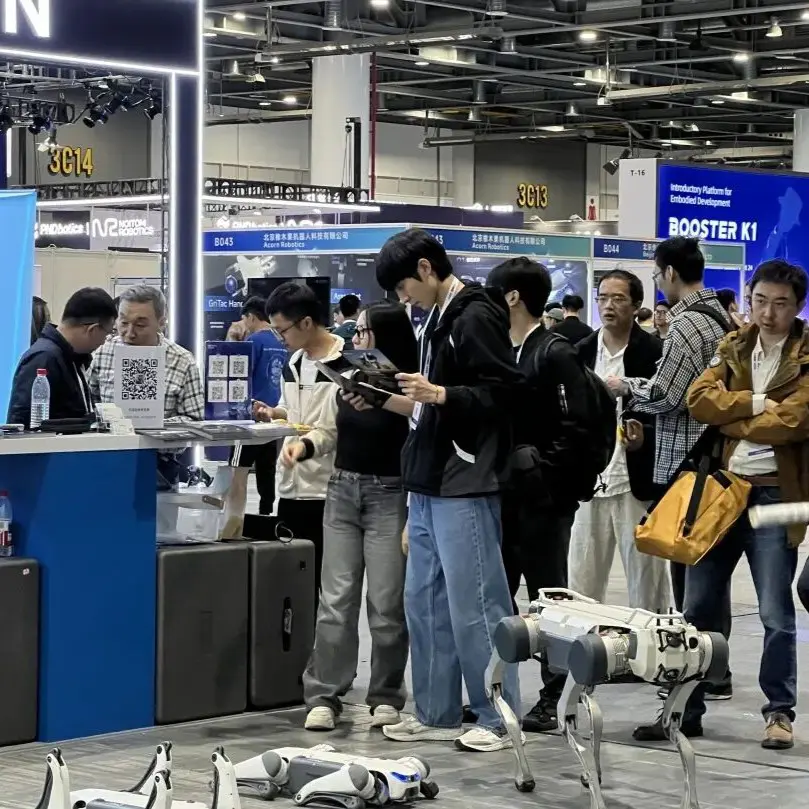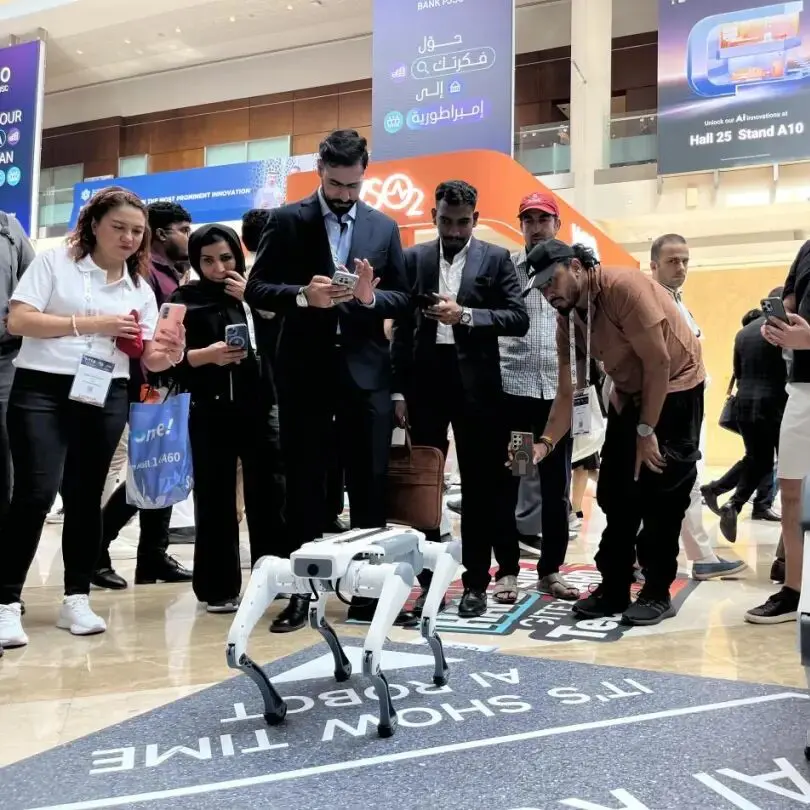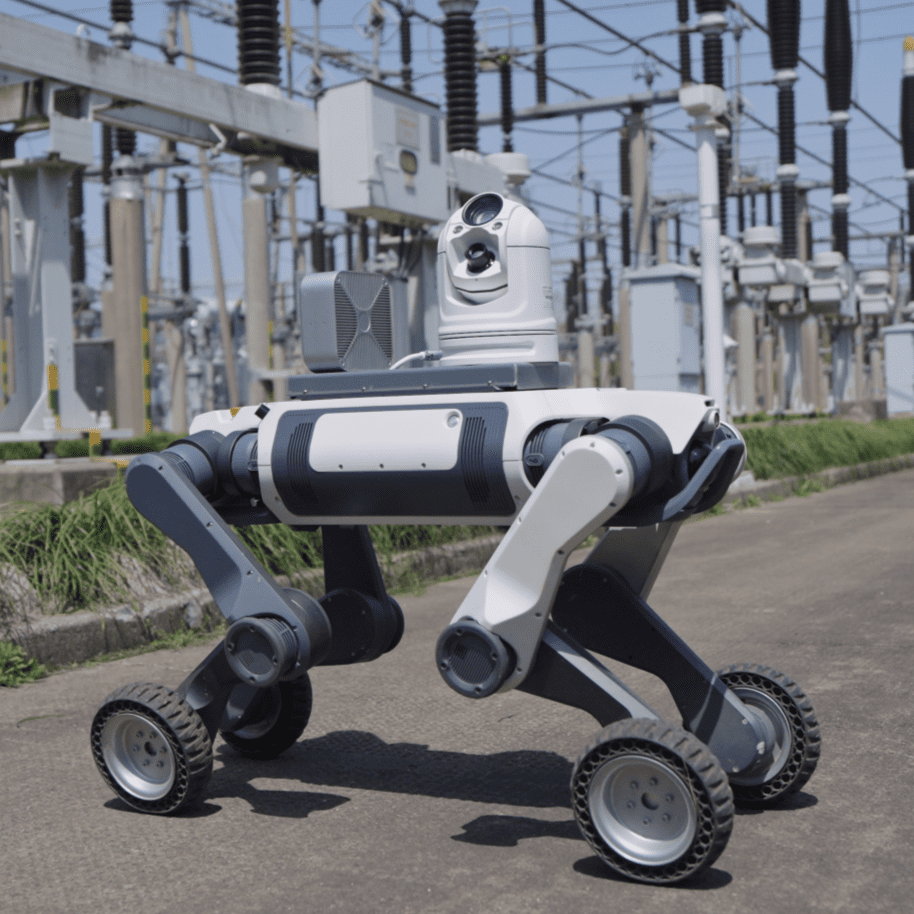Beneath bustling cities lies an intricate network of underground utility tunnels — the hidden arteries that carry electricity to every corner of modern life. These power tunnels, packed with thousands of high-voltage cables, form the lifeline of urban energy systems. Ensuring their safety and reliability has always been a critical yet challenging mission.
Traditional manual inspections in these tunnels are notoriously difficult. The confined, dimly lit spaces have poor ventilation and elevated CO₂ levels, posing health and safety risks for workers. Each inspection round requires operators to carry heavy instruments deep into the tunnels, manually checking hundreds of inspection points — a process that can take half a day or longer. As cable networks continue to expand, the limitations of manual inspections have become increasingly evident — high labor costs, low efficiency, and growing safety concerns.
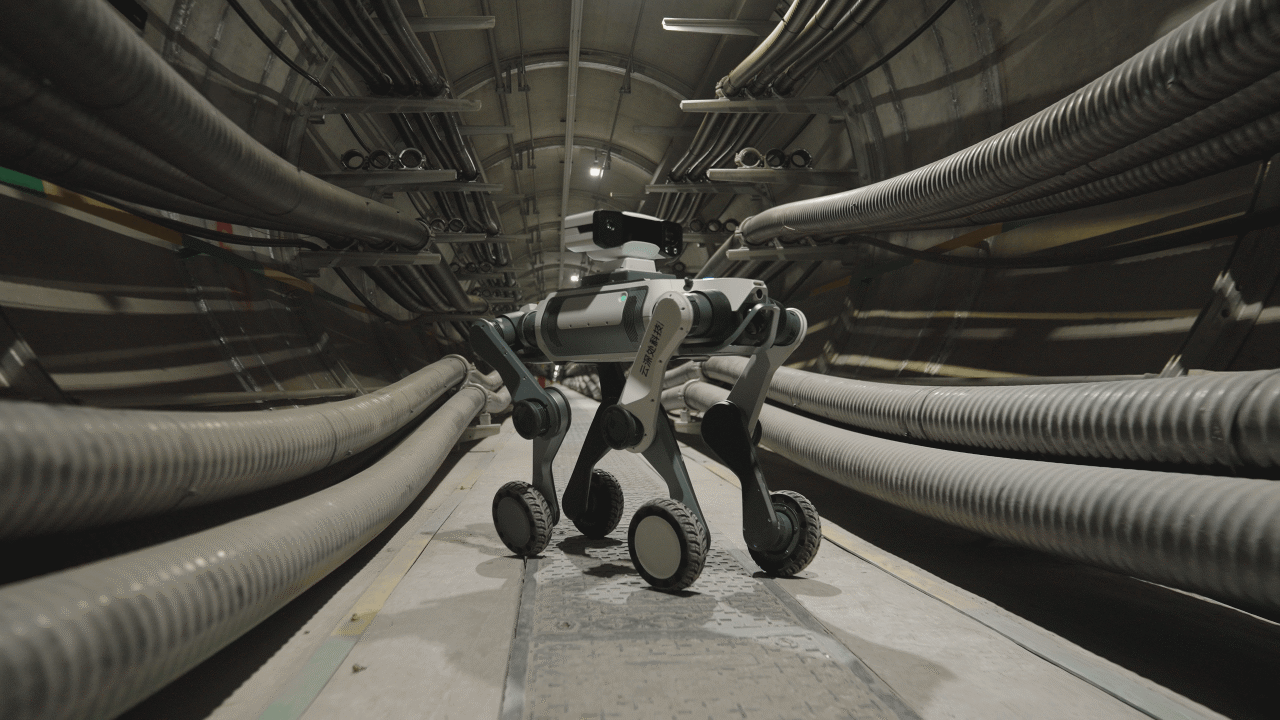
A Smarter Way to Inspect: DEEP Robotics’ Quadruped Innovation
To overcome these challenges, DEEP Robotics has introduced a new generation of AI-powered quadruped robots for autonomous tunnel inspection — offering a flexible, efficient, and safe alternative to traditional methods.
Equipped with advanced terrain adaptability and a full suite of perception sensors, DEEP Robotics X30 and Lynx M20 robots redefine how underground inspection is performed.
- Jueying X30 — A high-performance quadruped robot engineered for complex, uneven terrain. It navigates steps up to 20 cm and steep slopes with ease, perfectly replicating human inspection routes and responding immediately to emergency tasks.
- Lynx M20 — A hybrid wheel-legged inspection robot optimized for long-distance travel in narrow tunnels. With its rapid movement and agile maneuverability, it performs high-frequency patrols and short-cycle missions with remarkable efficiency.
Working in collaboration, multiple robots can cover large inspection zones with synchronized precision. While the X30 focuses on detailed, high-accuracy inspections in critical areas, the Lynx M20 performs fast traverses through extended sections, using infrared thermal imaging to detect abnormal temperature rises in cables and joints. All collected data is synchronized in real time through DEEP Robotics’ cloud platform, ensuring seamless integration of visual, thermal, and sensor-based insights.
This multi-robot coordination model enables round-the-clock coverage — each robot can patrol autonomously for 6–8 hours, inspecting every segment at two-hour intervals. The system continuously monitors cable joints, grounding boxes, and auxiliary devices, significantly improving inspection frequency, accuracy, and safety.
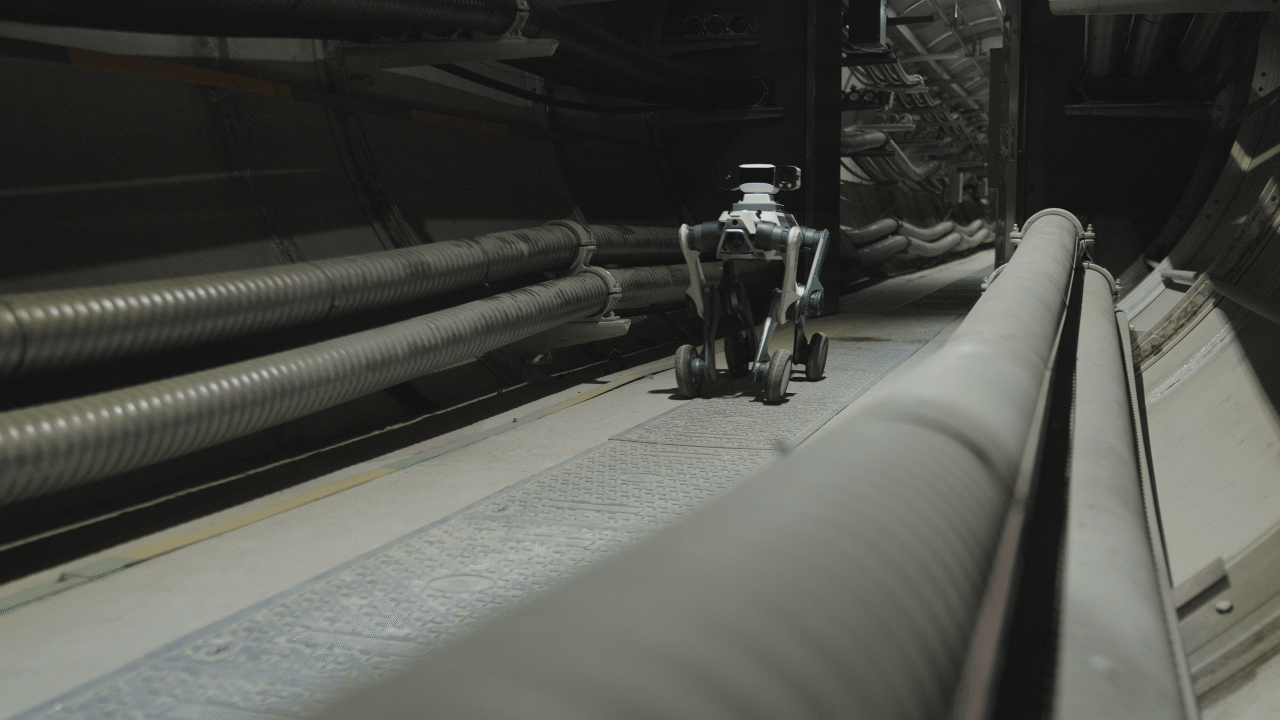
Integrated Intelligence: From Vision to Precision Diagnosis
The Jueying X30 can also be equipped with an intelligent robotic arm that expands its sensory capabilities. By combining visible-light cameras, infrared thermal sensors, partial discharge detectors, and ground current sensors, it delivers comprehensive condition monitoring in real time.
This integrated “smart sensing” system allows the robot to:
- Identify structural issues such as cracks or joint expansion in tunnel walls
- Detect early-stage insulation degradation through harmonic and leakage current analysis
- Monitor temperature variations and humidity levels across the entire environment
With this advanced perception suite, DEEP Robotics’ quadrupeds provide unmatched visibility in environments where human operators face limited access, low lighting, and unpredictable conditions.
Built to Endure: Industrial-Grade Reliability
Beyond intelligence, these robots embody true industrial durability. With IP67-rated protection, they operate reliably amid moisture, dust, and debris. Their wide temperature range (–20°C to 55°C) ensures performance stability in both winter cold and high-temperature cable environments.
Even in extreme lighting — from complete darkness to flickering light or glare — DEEP Robotics’ navigation algorithms enable precise localization and stable autonomous operation. Their high payload capacity also allows flexible integration of additional inspection modules, such as LiDARs or 3D mapping systems.
According to a local power operations manager:
“With DEEP Robotics’ quadruped robots assisting our maintenance work, inspection efficiency has more than doubled. The system now performs real-time monitoring and instant reporting, allowing our team to focus on analysis and decision-making rather than manual patrols.”
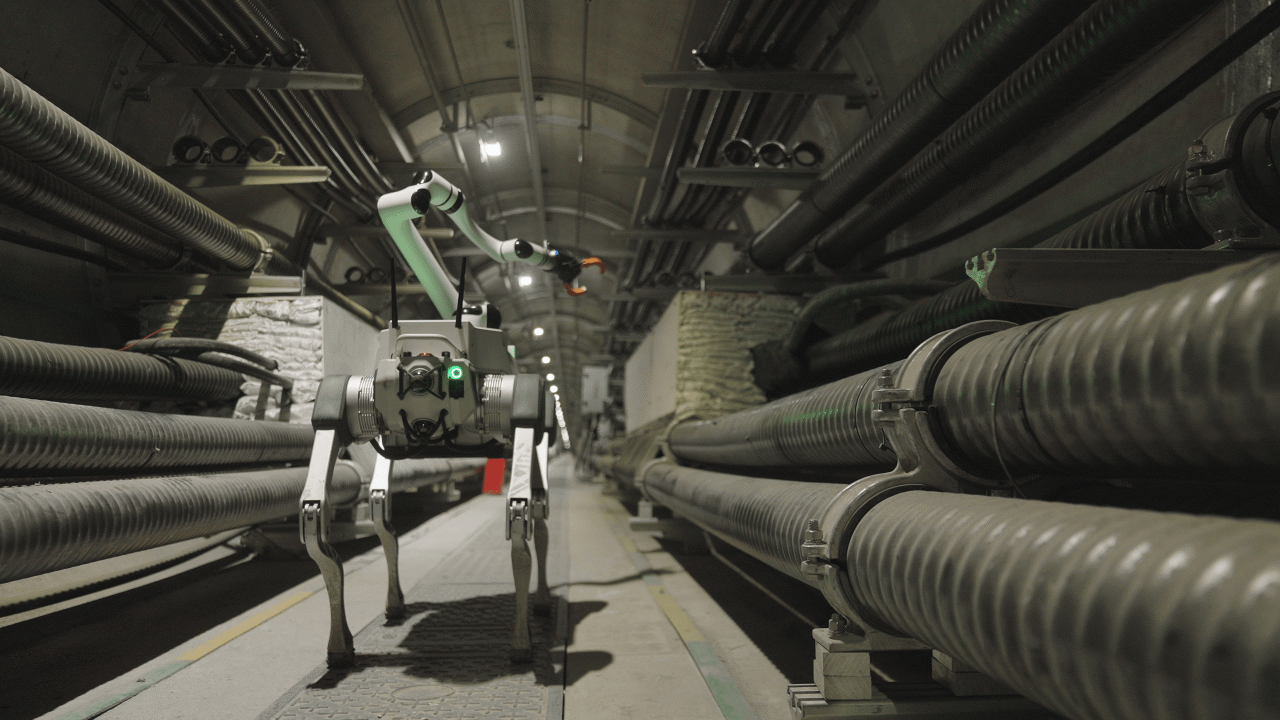
Empowering the Future of Power Maintenance
During peak electricity demand — such as holidays or summer heat waves — DEEP Robotics’ robots tirelessly patrol critical power tunnels, continuously monitoring temperature anomalies and potential faults. Their autonomous operation ensures uninterrupted service reliability, protecting millions of homes from power outages.
By integrating DEEP Robotics’ quadruped and wheel-legged robots into power infrastructure management, the city has achieved more than just automation — it has realized a smarter, safer, and more sustainable inspection model. The deployment represents a leap forward from traditional labor-intensive maintenance to data-driven, autonomous infrastructure management.
With robust hardware, advanced AI perception, and cloud-based collaboration, DEEP Robotics is redefining the future of autonomous inspection — safeguarding the invisible backbone of urban life and ensuring that every light across the city continues to shine.

